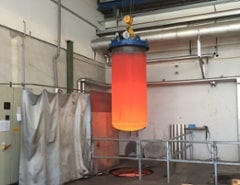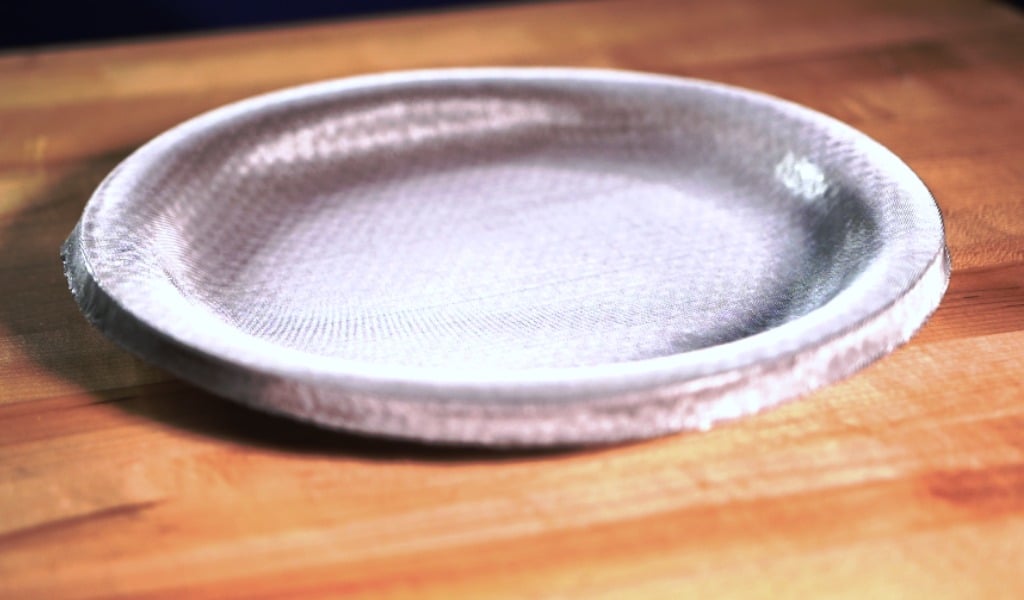The Benefits of Annealing Wire Mesh for Molded Pulp Applications
Woven wire mesh is amongst several screening media options used during the molded pulp process. Its ability to facilitate even heat and pressure distribution while offering optimal cut points and flexibility make the material stand out.
Now, several steps must be taken to ready wire mesh for molded pulp applications. One critical step that often gets overlooked is annealing your wire mesh.
But what does it mean to anneal your wire mesh, and why exactly is it such an imperative step?
W.S. Tyler has been weaving wire mesh into dozens of industries for over 150 years and has since developed expertise in heat-treating woven wire mesh to accommodate countless applications.
In an effort to share this expertise, we wrote the following article to highlight the impact annealing wire mesh can have on the molded pulp industry. It will cover:
What Is Annealing?
Annealing is a heat-treatment process that lowers the internal stress of each wire in the weave. This causes the mesh to become softer, making it easier to form into pulp molds.
Annealing is most commonly carried out using one of two techniques: batch annealing and continuous annealing.
Batch Annealing

Batch annealing involves placing rolls of wire mesh into a specialized capsule and submerging it into a furnace. This capsule is designed to create a complete seal and subject the mesh to vacuum pressure once placed in the furnace.
The mesh is then heated to a specific temperature for a specific amount of time. Once done, the mesh is removed from the furnace and left out until completely cool.
Continuous Annealing

Continuous annealing involves the wire mesh supplier taking a wire mesh roll, unrolling it, and passing it through an oven-like furnace. As it is a lot harder to control than batch annealing, the unrolled mesh will typically pass through the furnace several times to ensure a thorough annealing.
Refer to the following article for more information about the annealing of woven wire mesh:
Why Is Annealing Critical To Molded Pulp Products?
Woven wire mesh is placed on top of the metallic mold and helps facilitate the molded pulp process. When used correctly, the mesh allows optimal water drainage and ensures heat, as well as vacuum pressure, is distributed evenly.
In order to fit snuggly on the metallic mold, wire mesh must be deep-drawn to take on the profile of the final molded product. While wire mesh is relatively pliable off the loom, capturing finer details of a mold can prove challenging.
Annealing ensures your wire mesh can be formed to replicate even the most detailed molds. It does so without altering the precision or characteristics of the pore openings of the mesh.
What Are the Consequences of Using Wire Mesh That Is Not Annealed?
Failure to properly anneal wire mesh intended for molded pulp applications will often lead to mold spring back. Spring back happens when the wire mesh lacks structural integrity, struggles to hold the form of the molds, and begins reverting to a flatter profile.
Annealing wire mesh can also help improve the rigidity of the pore openings. Non-annealed mesh will be more sleazy and flimsy, which will impact the fiber retention and, ultimately efficiency, of your molded pulp process.
Put simply, implementing wire mesh that has not been properly annealed can lead to costly inconsistencies in the final molded pulp products.
Capture Every Detail With Deep Drawn Wire Mesh
Annealing your wire mesh alters the internal stress of each wire in the weave, making it vastly easier to implement molds that hold their form. Applying this heat treatment process prevents spring back and preserves the pore openings, resulting in optimal fiber retention and consistent molds.
Now that you know the importance of having your wire mesh annealed, you must gain a better understanding of how wire mesh is deep drawn. This knowledge will allow you to fine-tune your entire process, preventing some of the most common issues that can hinder the production of high-quality molded pulp products.
Having been in the wire weaving business for 150 years, W.S. Tyler strives to ensure you have a comprehensive understanding of woven wire mesh and the value-added processes that can be applied to it so you can produce molds that perform and last.
To learn everything you need to know about deep drawing wire mesh for molded pulp applications, read the article below:
About Ronnie Brown
Ronnie is the Content Writer for W.S. Tyler and has four years of experience as a professional writer. He strives to expand his knowledge on all things particle analysis and woven wire mesh to leverage his exceptional writing and graphic design skills, creating a one-of-a-kind experience for customers.




